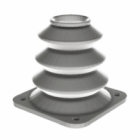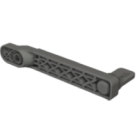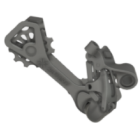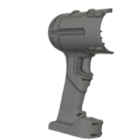CAD software for 3D printing
At the heart of every 3D printed object lies a digital model — and most of the time, that model is created in CAD software. CAD, or Computer-Aided Design, gives you the tools to create precise, editable, and manufacturable geometry that can be turned into a printable file. Whether you’re designing for engineering, product development, or custom prototyping, CAD programs for 3D printing form the foundation of your digital workflow.
Understanding what CAD software to use for 3D printing, how it works, and which features matter most is key to building successful models that are not just visually appealing, but also structurally sound and technically printable.
What is CAD software in the context of 3D printing?
CAD software for 3D printing refers to digital design tools used to create solid, three-dimensional models that can be exported for manufacturing. The output is typically saved as an STL or 3MF file, which contains all the geometric data needed by a slicer.
Unlike mesh modeling tools used in animation or game design, 3D CAD software for 3D printing focuses on precision. It allows for parametric control, accurate tolerances, and clean geometry — all essential for creating models that can be printed successfully, especially when parts must fit together or perform a mechanical function.
Best CAD software for 3D printing
When people ask what is the best CAD software for 3D printing, the answer depends on skill level, project type, and budget. Here are some standout options across different needs:
- Fusion 360 – an all-around favorite among professionals and hobbyists alike. It offers parametric modeling, assemblies, and direct integration with slicing tools.
- TinkerCAD – a browser-based, beginner-friendly platform great for education or quick conceptual models.
- SolidWorks – industry-standard parametric design tool used in product development, often paired with industrial 3D printers.
- FreeCAD – open-source and customizable; popular in the maker community.
- Rhino 3D – known for organic modeling and used in industrial design, jewelry, and architecture.
- AutoCAD – while traditionally 2D-focused, newer versions support 3D modeling, making it possible to create exportable geometry — yes, you can use AutoCAD for 3D printing, though it’s not the most intuitive for complex shapes.
Each of these tools can export models in printable formats, but their workflows vary — so it’s important to match the software to your goals.
How to learn CAD for 3D printing?
Learning how to use CAD software for 3D printing can seem intimidating at first, but most modern tools are designed to scale with your experience. Start by focusing on:
- sketching and extruding — the building blocks of most CAD systems,
- basic operations like fillets, cuts, holes, and chamfers,
- understanding tolerances and clearance if your model includes moving or interlocking parts,
- exporting properly to STL or 3MF, ensuring the mesh is manifold and printable.
There are countless tutorials, free courses, and community forums dedicated to helping users learn CAD for 3D printing, many of which are integrated directly into the platforms (e.g., Autodesk’s learning portal for Fusion 360).
Choosing the right CAD application software
If you’re wondering what CAD software to use for 3D printing, the answer should align with your intended application. For engineering and precision assembly, parametric CAD is a must. For art, architecture, or sculpture, surface modeling tools may be more appropriate. And for quick, accessible projects, browser-based solutions like TinkerCAD offer a low barrier to entry.
Ultimately, choosing the right CAD application software for 3D printing means finding the balance between capability, usability, and compatibility with your printer and slicer.
Explore also
- What software do 3D printers use
- 3D print slicer programs
- 3D printing simulation software
- 3D optimization software
- Open source vs proprietary software
Related categories













